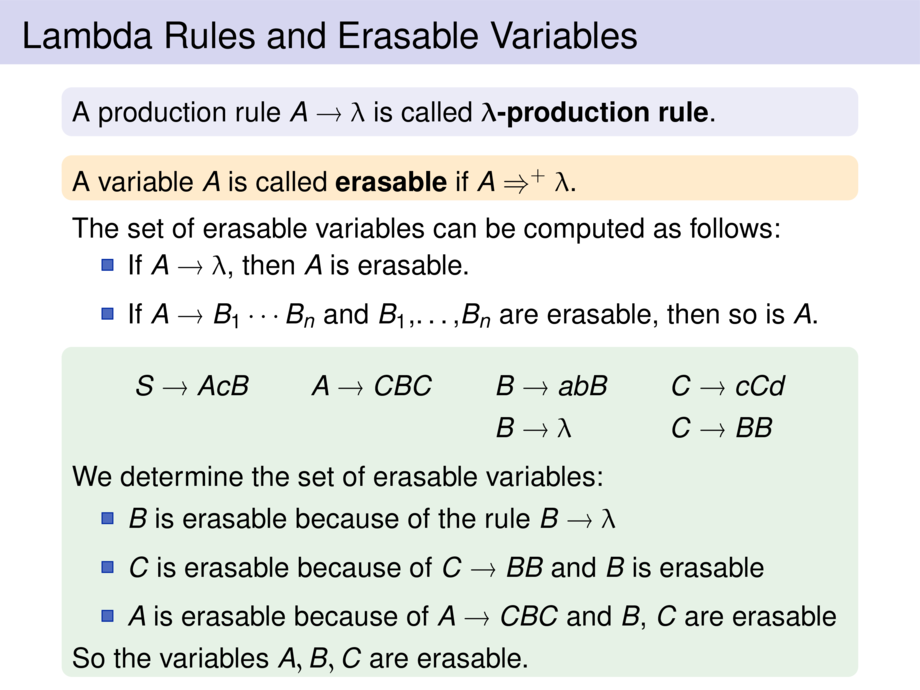



































































































12/77
\begin{frame}{Lambda Rules and Erasable Variables}
\begin{block}{}
A production rule $A \to \lambda$ is called \emph{$\boldsymbol{\lambda}$-production rule}.
\end{block}
\pause
\begin{goal}{}
A variable \(A\) is called \emph{erasable} if \(A \Rightarrow^+ \lambda\).
\end{goal}
\pause
% The set of erasable variables is the smallest set such that:
%
% \begin{itemize}
% \item If \( A \to \lambda \), then \(A\) is erasable.
% \item If \( A \to B_1 \cdots B_n \) and \( B_1 , \ldots, B_n \) are erasable,\\ then \( A \) is erasable.
% \end{itemize}
% \pause\medskip
The set of erasable variables can be computed as follows:
\begin{itemize}
\pause
\item
If $A \to \lambda$,
then $A$ is erasable.
\pause
\item
If $A \to B_1 \cdots B_n$ and $B_1$,\ldots,$B_n$ are erasable,
then so is $A$.
\end{itemize}
\pause
\begin{exampleblock}{}
\vspace{-1ex}
\begin{talign}
S &\to AcB &
A &\to CBC &
B &\to abB &
C &\to cCd \\
&& &&
B &\to \lambda &
C &\to BB
\end{talign}
We determine the set of erasable variables:
\begin{itemize}
\pause
\item \(B\) is erasable because of the rule \(B \to \lambda\)
\pause
\item \(C\) is erasable because of \(C \to BB\) and \(B\) is erasable
\pause
\item \(A\) is erasable because of \(A \to CBC\) and \(B\), \(C\) are erasable
\end{itemize}
\pause
So the variables \(A,B,C\) are erasable.
\end{exampleblock}
\end{frame}

